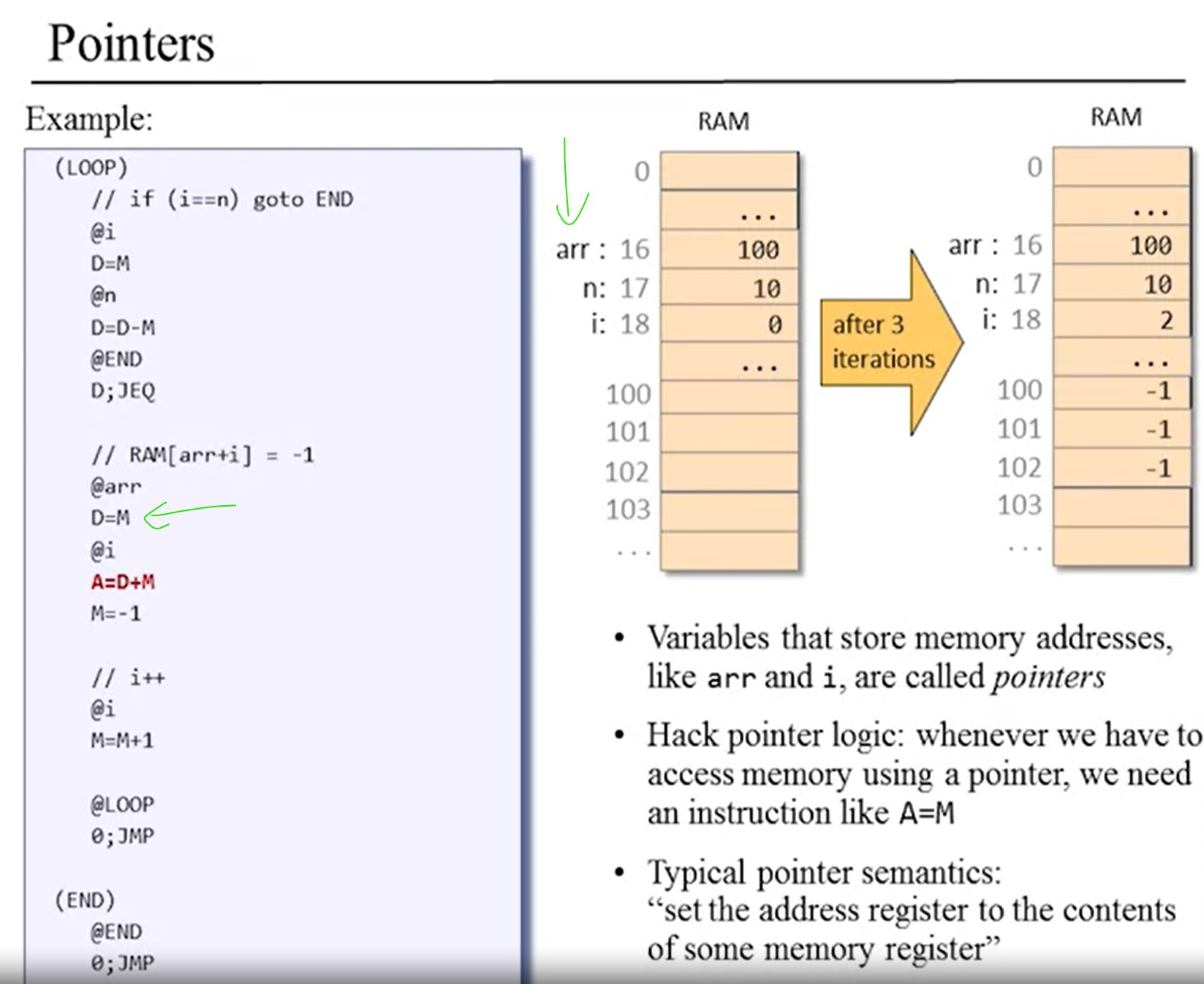From the lecture slide, I saw the following hack language which confused me.
I don't understand when you @arr, M equals to the address of 'arr'. Shouldn't it be the value of arr which is RAM[arr] (the value 100)???
From my understanding, @sth will have the follow effects:
1. A = sth
2. M = RAM[sth] // should be the value stored in the address?
Thank you very much
